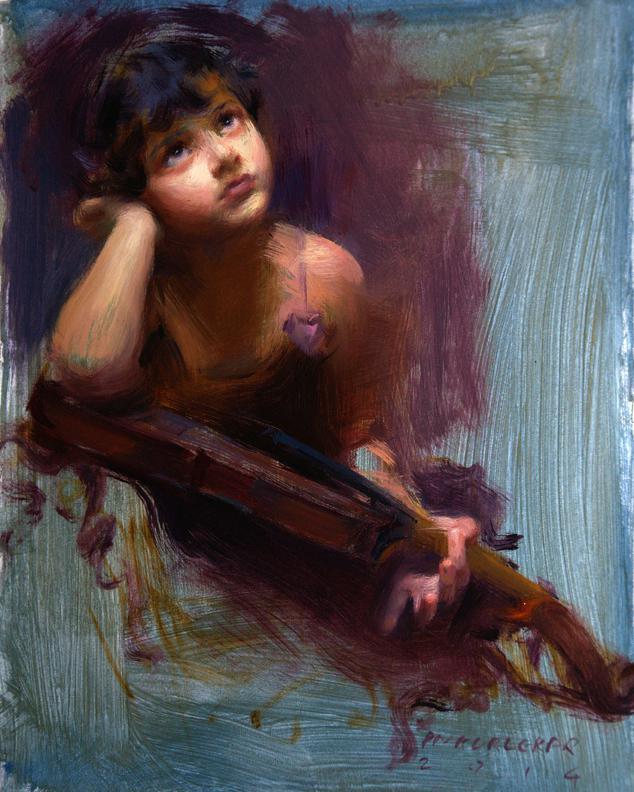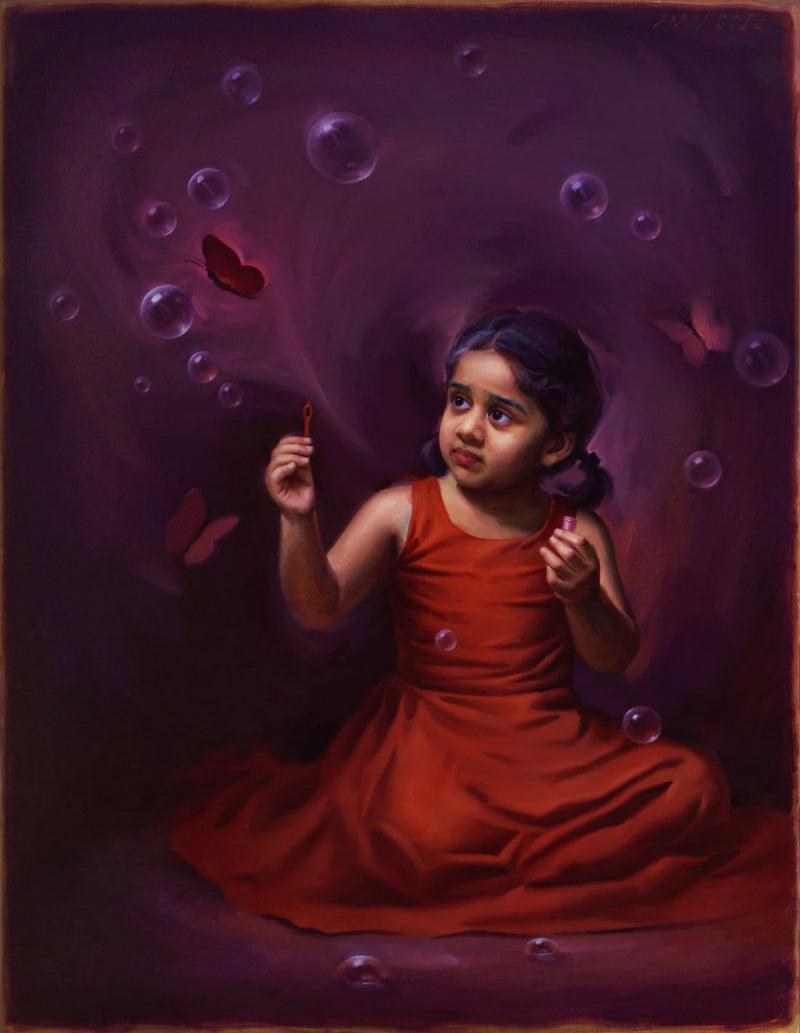Introducing the Tricks Behind Meaningful Figurative Oil Painting Styles
The Function of Emotion and Expression in Figurative Oil Painting: An Extensive Analysis of Topic and Structure
The interplay of emotion and expression in metaphorical oil paint acts as an essential lens where one can check out the complex connection in between subject and composition. Artists harness numerous methods, from shade selection to brushstroke dynamics, to grow psychological resonance within their jobs. This nuanced orchestration not only forms customer assumption yet likewise invites a much deeper query into exactly how these aspects integrate to reflect the intricacies of human experience. As we discover this abundant surface, one should think about just how certain instance studies illuminate the more comprehensive effects of these artistic selections.
Recognizing Emotion in Art
Emotion in art acts as an effective channel for expression, allowing artists to share complex feelings through their job. In metaphorical oil paint, this emotional depth is frequently depicted with the representation of the human figure, catching the subtleties of human experience. The choice of topic, color scheme, and brushwork all add to the emotional resonance of an item.
Artists frequently bring into play personal experiences, societal issues, or universal styles to evoke feelings in the customer. For example, a picture may show vulnerability, while a dynamic figure in movement can signify freedom or chaos. These psychological strings connect the viewer to the art work, promoting a discussion that transcends the aesthetic medium.
Additionally, the interplay between light and shadow can enhance psychological intensity, assisting the customer's stare and attracting interest to particular elements within the composition. The use of structure in oil painting better adds layers of complexity, welcoming a responsive reaction that improves the emotional experience. Overall, recognizing emotion in art is critical for valuing the nuances that define figurative oil painting, as it transforms plain depiction into a profound expedition of the human condition.
Trick Aspects of Composition
In the world of figurative oil painting, the structure acts as the underlying structure that organizes aesthetic elements and improves the psychological story. Essential components of make-up include equilibrium, contrast, centerpiece, and rhythm, each contributing to the general effect of the artwork.
Balance describes the circulation of visual weight within the paint, which can be attained via unbalanced or symmetrical plans. A healthy make-up gives stability, allowing the customer to involve with the item sympathetically - figurative oil painting. Contrast, on the other hand, entails juxtaposing various components, such as light and dark or cozy and trendy colors, to guide the audience's eye and evoke emotional responses
The focal factor is vital, as it guides interest to the most significant component of the paint, frequently highlighting the psychological core of the story. By masterfully integrating these essential components, artists can craft engaging and emotionally resonant figurative oil paintings that mesmerize and engage their target market.
Subject and Its Effect
Subject plays an essential duty in figurative oil paint, as it not just works as the structure for the story yet likewise forms the customer's analysis and psychological involvement with the artwork. The option of subject-- be it a solitary figure, a team dynamic, or a thematic representation-- straight affects the emotional environment communicated to the audience.

For example, pictures commonly stimulate personal connections, disclosing the intricacies of human expression and personality, while scenes portraying common activities can create a feeling of belonging or fond memories. Moreover, the cultural and historic context of the subject issue improves the viewer's understanding, prompting much deeper representations on societal norms, worths, and the human problem.
Various topics also create differing levels of interaction; a significant problem depicted via numbers in stress might evoke feelings of anxiousness or compassion, while tranquil landscapes can invoke peace and contemplation. Ultimately, the effect of topic in metaphorical oil painting is profound, as it acts as a conduit for psychological vibration, assisting the customer's action and interpretation, and cultivating a connection Website in between the observer and the art work. This interaction is crucial for the successful interaction of the musician's intent.
Strategies for Stimulating Feelings
The performance of metaphorical oil paint in conveying emotions is substantially affected by the techniques used by the musician. One of one of the most important techniques is using shade theory, where the critical choice of colors can stimulate particular emotional reactions. Cozy colors, such as oranges and reds, frequently elicit sensations of enthusiasm or aggression, while cooler tones like blues and environment-friendlies often tend to stimulate calmness or sadness.
Another important technique is the recommended you read manipulation of light and darkness, called chiaroscuro. This method improves the three-dimensionality of numbers, producing significant contrasts that can heighten psychological depth. The placement of light can direct audiences' feelings, highlighting particular components of the make-up.
Brushwork additionally plays a crucial duty; loose, expressive strokes can communicate power and spontaneity, whereas smoother techniques could suggest serenity or precision. Moreover, the arrangement of topics within the composition can influence emotional effect. Close distance can suggest intimacy, while range may indicate isolation.
Eventually, the mix of these strategies allows musicians to craft narratives that resonate with the audience, changing a plain visual experience into an evocative psychological journey. - figurative oil painting

Study of Notable Functions
Analyzing remarkable jobs of metaphorical oil painting reveals exactly how different strategies are employed to evoke powerful emotions. One exemplary situation is Edvard Munch's "The Scream," where the altered number and swirling background convey existential fear. Munch's use color-- brilliant oranges and deep blues-- intensifies the emotional impact, showcasing exactly how palette selections can shape visitor experience.
An additional substantial job is Pablo Picasso's "Les Demoiselles d'Avignon." Here, fragmented kinds and bold brushstrokes reflect a turbulent emotional landscape, challenging conventional depictions of the women figure. Picasso's innovative structure not just captures the viewer's focus but also welcomes reflection on themes of identification and sexuality.
Furthermore, Frida Kahlo's "The 2 Fridas" supplies a touching expedition of duality and self-identity. The different numbers, linked by a common heart, exhibit Kahlo's emotional deepness and individual story. figurative oil painting. Her precise focus to detail and symbolic elements offer to engage viewers on a natural level
These instance researches emphasize the profound connection in between feeling and composition in figurative oil paint, revealing just how musicians harness technique to interact complicated feelings and narratives that resonate throughout time and culture.

Conclusion
To conclude, the interplay of emotion and expression in figurative oil paint significantly improves the visitor's experience and interpretation of the art work. Via a mindful selection of topic and compositional techniques, artists communicate profound stories that reverberate on both personal and universal levels. The application of color theory, brushwork, and chiaroscuro more intensifies emotional depth, transforming each canvas right into an effective representation of the complexities of original site the human experience.
In metaphorical oil paint, this psychological deepness is frequently represented with the depiction of the human number, catching the nuances of human experience.Furthermore, the interplay in between light and shadow can magnify emotional strength, directing the customer's gaze and attracting focus to particular elements within the composition. The usage of texture in oil paint better adds layers of complexity, welcoming a responsive reaction that enhances the emotional experience.The focal factor is important, as it routes attention to the most substantial part of the paint, usually highlighting the emotional core of the story. Eventually, the impact of subject matter in metaphorical oil painting is profound, as it serves as a channel for emotional vibration, guiding the audience's response and analysis, and promoting a link in between the art work and the observer.